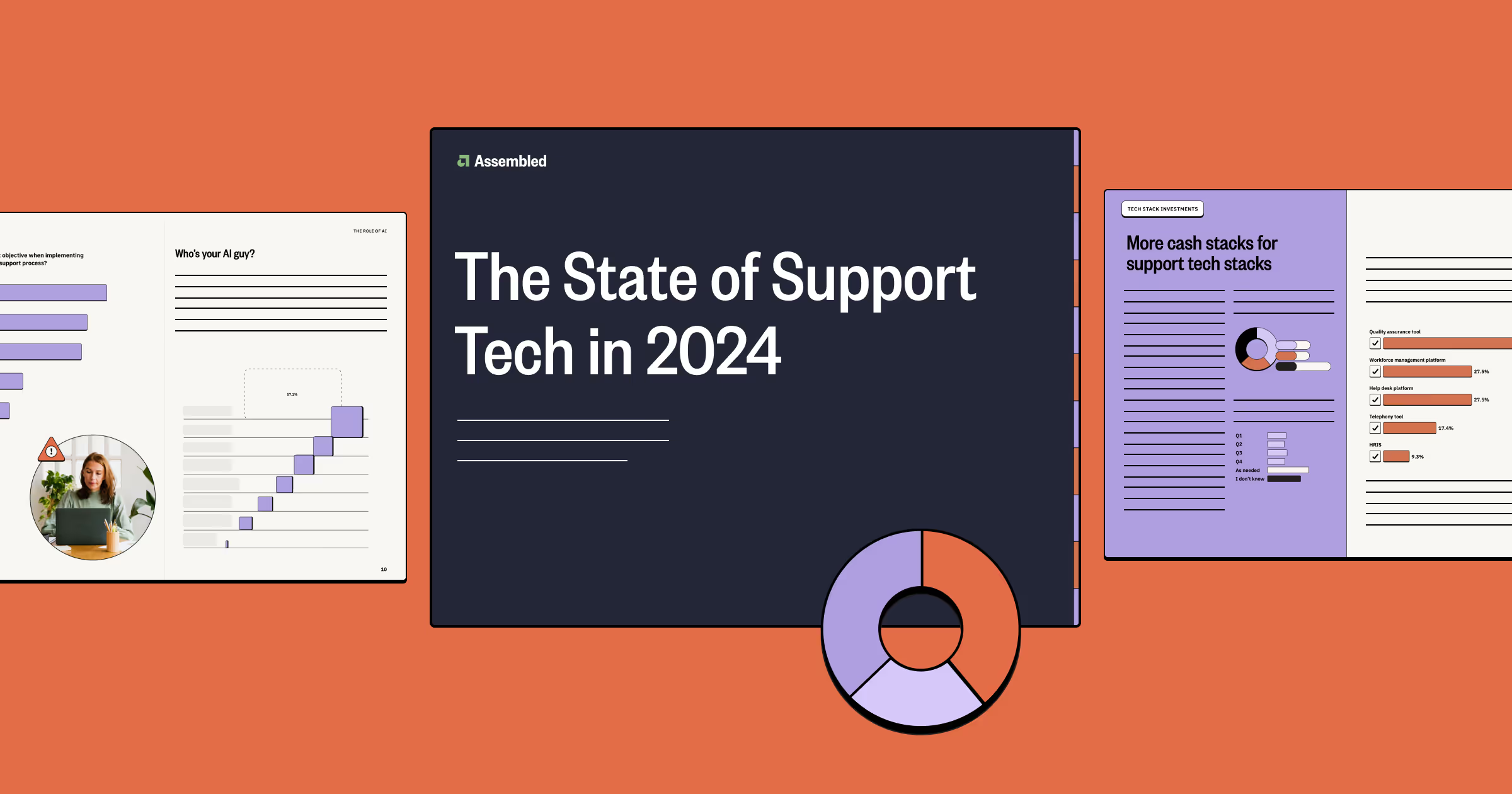A guide to holiday forecasting for support teams

With Halloween coming up and Thanksgiving and Christmas on the horizon, this is the time of year when the weeks start flying by. For support teams, it’s time to prepare your staffing for the days that simply don’t behave like the others—holidays. The holidays are a time for spending time with family and friends but can also mean significant volume fluctuations, right when people want to take time off the most.
Forecasting any time of the year is hard but it fosters predictability and visibility for your team, which is why we put together a guide to forecasting support volume. To recap the steps:
- Choose an interval—the unit of time you're interested in: 15-minute increments, hours, or days—and a time period over which to retrieve your data.
- The simplest approach is to average the past. In order to forecast how many tickets you will receive at 9am on Monday, take the average of 9am’s for the past several weeks. If your volume varies based on the day of the week—often weekends are lighter than weekdays— average together only 9am’s for the past several Mondays or weekdays.
This doesn't work for the holidays though. Take Christmas (12/25), for example: you can’t simply look to the same day the week prior (12/18) and expect it to behave similarly. In a normal week, that makes perfect sense but on Christmas, support volumes change. If you work at a B2B software company, you know most of your potential contacts will be offline. However, if you work at a gaming company, you might be a bit busier than usual once kids start opening up new games and consoles.
The impact of a given holiday will also differ depending on your industry—other holidays like Mother’s Day or Halloween may be important to your particular business—Harry’s, the men’s care brand, sees a large volume increase on Father’s Day.
Note: there are two distinct types of holidays from a planning perspective to take into account when thinking about your forecasting:
- The holiday falls on the same day of the week each year but the date varies, e.g. Labor Day, Thanksgiving, Black Friday
- The holiday always falls on the same date but the day of the week changes each year, e.g. Christmas, New Years Day
The bottom line is that the existing projections won't hold up. So, what are you supposed to do?
We'll walk through the principles of a simple daily holiday forecast but you can also upload your own data in the template below for more granular analysis. Preview it below or click here to make a copy of the template:
1. Look at last year’s holiday volume
Start by looking at the data for the same holiday last year. How many contacts did you receive? Was there any arrival pattern—did volume spike in the morning and then level off or did it stay steady throughout the day? Either way, note the actual volume you received on the holiday in question.
For some holidays, you’ll want to consider a few days surrounding the holiday, for example:
- Thanksgiving and Black Friday
- Christmas Eve and Christmas
- New Year’s Eve and New Year
2. Compare the holiday with the weeks leading up
Next, you’ll want to look at the weeks prior to the holiday last year. In our spreadsheet, we look at the previous 4 weeks but you can also compare against a larger number of weeks or even multiple years past. The principle remains the same: What was the average volume you received over that time? You'll use that number as a proxy for the volume you would receive if the day were not a holiday. Dividing your holiday volume by this proxy gives you your holiday multiplier, the number that you'll use to multiply your usual forecasted projections.
volume received on holiday
━━━━━━━━━━━━━━━━ x 100 = holiday multiplier
avg. volume received in weeks prior
e.g. If a retail company received 1500 contacts on Black Friday last year and 1200 in the 8 weeks prior, its formula would look like this:
1500
━━━ x 100 = 1.25
1200
3. Adjust your forecast accordingly
Once you know your holiday multiplier, simply multiply it by the number of contacts you’d expect for the week normally and you have your holiday forecast:
holiday multiplier x expected contacts = holiday forecast
e.g. If the same retail company was forecasting 1600 contacts for the day normally, the formula would look like this:
1.25 x 1600 = 2000 contacts
Is your holiday higher or lower than the previous weeks? If it’s higher, you’ll want to think about baking a buffer into your forecast. If it’s lower than the surrounding weeks, you may want to pare down the forecast to avoid any overstaffing—both for the sake of your forecast and so your team can enjoy the holiday!
This is a simple daily example but the spreadsheet will break your holiday data down by hour and allow you to compare the holiday directly to the average volume for the same day of the week (e.g. compare Thanksgiving only to past Thursdays). Multiplying last year's holiday multiplier by this year's forecast will yield your holiday forecast.
While forecasting can be broken down to a science, there's a certain art to it since you're ultimately trying to predict the future. Alternatively, you can use a dedicated software tool like Assembled to take care of forecasting for the holidays for you. Assembled automatically takes into account the context of holidays with historical data whether you were using Assembled last year or not. We use as many years of historical data we have on hand to produce informed holiday forecasts to make the holidays a bit less stressful for all involved.





